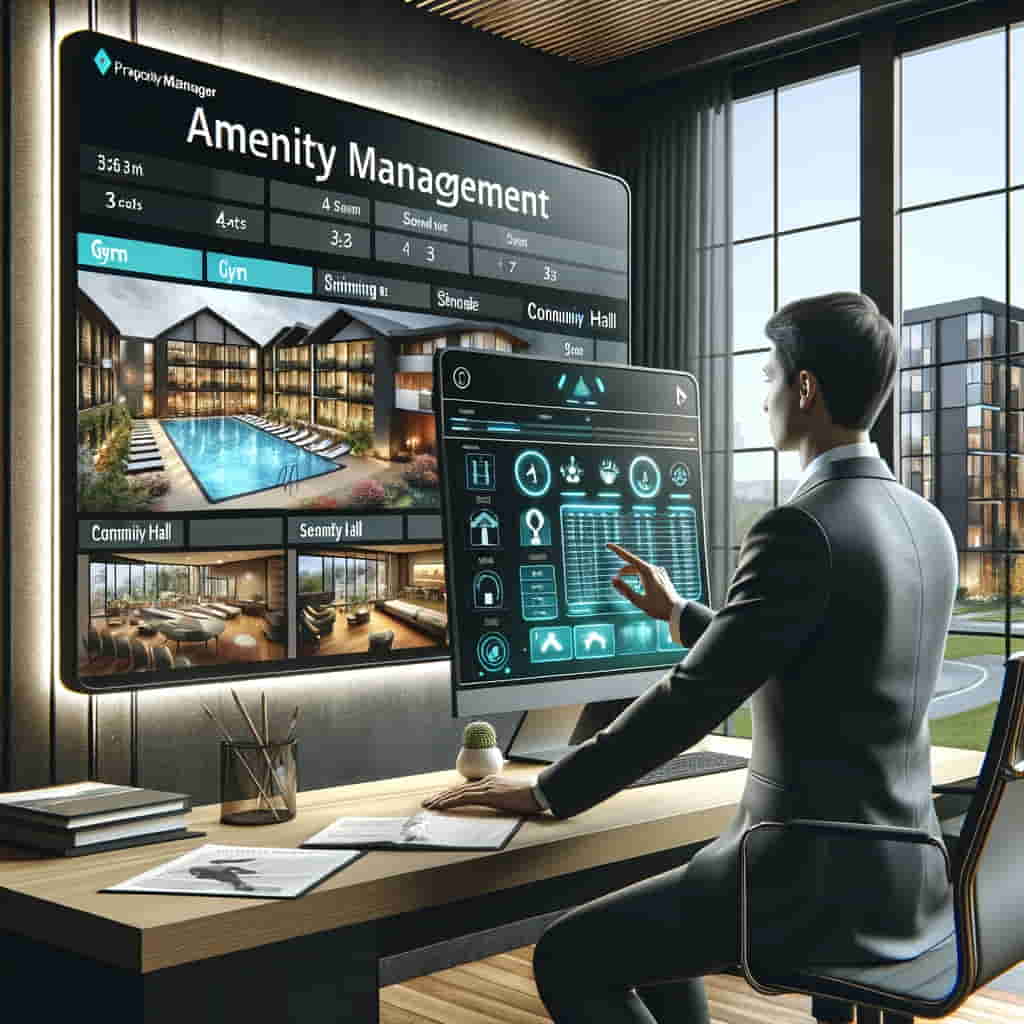How to Increase Multifamily NOI Without Raising Rent

As a multifamily property owner or manager, maximizing your net operating income (NOI) is a top priority. While raising rent may seem like the most straightforward solution, it’s not always the best approach. In fact, there are several strategies you can implement to increase your NOI without burdening your tenants with higher rental costs. In this article, we’ll explore some effective ways to boost your multifamily property’s profitability while maintaining tenant satisfaction.
1. Optimize Your Property’s Energy Efficiency
One of the most effective ways to increase your NOI is by reducing your property’s operating expenses. Energy costs can be a significant portion of your overall expenses, so optimizing your property’s energy efficiency can lead to substantial savings. Here are some ways to improve energy efficiency:
- Upgrade to energy-efficient appliances, such as ENERGY STAR-certified refrigerators, dishwashers, and washing machines.
- Install LED lighting throughout the property, which uses up to 90% less energy than traditional incandescent bulbs and lasts much longer.
- Implement a smart thermostat system that automatically adjusts the temperature based on occupancy and time of day.
- Conduct regular maintenance on your HVAC systems to ensure they are running efficiently.
By implementing these energy-saving measures, you can significantly reduce your utility bills and increase your NOI without passing the costs onto your tenants.
2. Implement a Preventive Maintenance Program
Another way to reduce your operating expenses and increase your NOI is by implementing a preventive maintenance program. Regular maintenance can help prevent costly repairs and extend the life of your property’s systems and equipment. Here are some tips for implementing an effective preventive maintenance program:
- Create a schedule for regular inspections and maintenance tasks, such as changing air filters, checking for leaks, and cleaning gutters.
- Use multifamily property management software to track and manage maintenance requests and work orders.
- Hire experienced maintenance staff or contract with a reliable maintenance company to handle repairs and preventive maintenance tasks.
- Educate your tenants on how to properly maintain their units and report any issues promptly.
By catching and addressing maintenance issues early, you can avoid more expensive repairs down the line and keep your property in top condition, which can help attract and retain tenants.
3. Offer Value-Added Amenities and Services
Another effective strategy for increasing your NOI without raising rent is by offering value-added amenities and services to your tenants. By providing additional benefits that enhance their living experience, you can justify higher rental rates and increase tenant satisfaction and retention. Here are some ideas for value-added amenities and services:
- Offer high-speed internet and Wi-Fi throughout the property.
- Provide a fitness center or gym with modern equipment and classes.
- Install a package locker system for secure and convenient package delivery.
- Offer a community room or lounge area for tenants to socialize and host events.
- Partner with local businesses to offer discounts or perks to your tenants, such as reduced-price memberships or exclusive offers.
By offering these types of amenities and services, you can differentiate your property from competitors and create a more desirable living environment for your tenants, which can lead to higher occupancy rates and increased NOI.
4. Streamline Your Operations with Multifamily Property Management Software
Finally, one of the most effective ways to increase your NOI is by streamlining your operations with multifamily property management software. This type of software can help you automate many of your day-to-day tasks, such as rent collection, maintenance requests, and tenant communication, which can save you time and money. Here are some benefits of using multifamily property management software:
- Automate rent collection and late fee assessment, reducing the risk of missed or late payments.
- Provide an online portal for tenants to submit maintenance requests and track their status, reducing the need for phone calls and emails.
- Offer electronic lease signing and renewal, making the process more convenient for tenants and reducing paper waste.
- Generate real-time reports on occupancy rates, rent collections, and maintenance costs, allowing you to make data-driven decisions.
By using multifamily property management software, you can reduce your operating expenses, improve tenant satisfaction, and increase your NOI without having to raise rent.
Conclusion
Increasing your multifamily property’s NOI doesn’t always require raising rent. By implementing strategies such as optimizing energy efficiency, implementing a preventive maintenance program, offering value-added amenities and services, and streamlining your operations with multifamily property management software, you can boost your profitability while maintaining tenant satisfaction. By taking a proactive approach to property management and focusing on reducing expenses and enhancing the tenant experience, you can achieve long-term success and growth for your multifamily property.
Why Rental Property Management Software is Essential for Modern Landlords?

The landscape of property management is constantly evolving. In today’s fast-paced world, juggling the responsibilities of managing rental properties can be overwhelming, even for seasoned landlords. Fortunately, technology has emerged as a powerful tool, offering solutions to streamline the process and maximize efficiency. Among these advancements, software for managing rental properties stands out as an essential resource for modern landlords.
This article will delve into the various benefits of utilizing rental property management software, analyzing how it can positively impact your investments and your overall experience as a landlord.
Enhanced Efficiency and Time Management
Managing rental properties often involves a multitude of tasks, from tenant screening and lease agreements to rent collection and maintenance coordination. Software for managing rental properties automates several of these processes, freeing up valuable time and minimizing the risk of errors.
For example, the software can:
- Automate rent collection: Online payment options and automatic reminders minimize late payments and streamline the collection process.
- Simplify tenant screening: Integrate with background check services and streamline the application process.
- Manage maintenance requests: Tenants can submit requests online, allowing for efficient scheduling and tracking of work orders.
- Generate reports and track expenses: Gain valuable insights into your investment performance with automatic reports on income, expenses, and vacancy rates.
By automating these tasks, software for managing rental properties allows you to focus on strategic decisions and building positive relationships with your tenants.
Improved Organization and Communication
Staying organized is critical for successful property management. Software for managing rental properties provides a central hub for storing and managing all property-related information. This includes:
- Tenant information: Lease agreements, contact details, and communication history.
- Maintenance records: Work order details, contractor information, and repair history.
- Financial records: Track income, and expenses, and generate financial reports.
- Property documents: Lease agreements, inspection reports, and other relevant documents.
This centralized platform ensures easy access to information, eliminating the need for scattered spreadsheets and emails. Furthermore, the software often facilitates communication by enabling:
- Automated notifications: Send lease renewal reminders, late payment notices, and maintenance updates to tenants.
- Tenant portals: Provide tenants with secure access to important documents, lease information, and communication channels.
Improved organization and communication through software for managing rental properties lead to a more professional and efficient experience for both landlords and tenants.
Increased Tenant Satisfaction
Maintaining positive relationships with your tenants is crucial for a successful rental business. Software for managing rental properties can contribute to tenant satisfaction in several ways:
- Streamlined payment options: Online rent payments offer convenience and flexibility for tenants.
- Easy maintenance request submission: Online portals allow tenants to easily submit and track maintenance requests, ensuring timely action.
- Improved communication: Transparent communication through dedicated communication channels within the software fosters a sense of trust and responsiveness.
By offering these features, software for managing rental properties demonstrates your commitment to providing a positive and professional living environment for your tenants. This, in turn, can lead to increased satisfaction, longer tenancies, and reduced vacancy rates.
Data-Driven Decision Making
Software for managing rental properties empowers you with data-driven insights for informed decision-making. The software can generate comprehensive reports on various aspects of your investment, including:
- Rental income and expenses: Track income from rent and analyze expenses for maintenance, repairs, and property taxes.
- Occupancy rates: Gain insights into vacancy periods and make informed decisions about rent adjustments or marketing strategies.
- Tenant demographics: Understand your tenant profile and tailor your communication or marketing strategies accordingly.
These data-driven insights enable you to make informed decisions about rent pricing, maintenance prioritization, and overall investment strategies. This can ultimately lead to increased profitability and long-term success.
Scalability and Future-Proofing
As your real estate portfolio grows, managing multiple properties can become increasingly complex. Software for managing rental properties offers scalability, allowing you to efficiently manage an expanding portfolio from a single platform.
Additionally, the software often provides mobile app access, allowing you to manage your properties remotely and stay connected on the go. This level of flexibility ensures ongoing efficiency and convenience as your needs evolve.
In conclusion, software for managing rental properties is not just a modern convenience; it has become an essential tool for modern landlords in the United States. By automating tasks, improving organization, fostering tenant satisfaction, and providing data-driven insights, software for managing rental properties empowers you to streamline your operations, maximize your returns, and achieve success in the dynamic world of real estate.
Sources:
- National Association of Realtors (NAR): https://www.nar.realtor/
- National Low Income Housing Coalition (NLIHC):
The Role of Amenity Management in Modern Properties

As the real estate landscape evolves, property owners are increasingly recognizing the importance of amenity management in enhancing the appeal and value of their properties. Amenity management encompasses the strategic planning, development, and maintenance of recreational and functional features within a property, creating an environment that goes beyond the mere physical structure of a building. In this article, we delve into the key aspects and benefits of amenity management in modern properties.
I. Understanding Amenity Management
Amenities in a property extend far beyond the basic necessities of shelter. They encompass a wide range of features and services designed to enhance the quality of life for residents. These can include recreational facilities like swimming pools, fitness centers, and parks, as well as practical amenities such as parking spaces, concierge services, and security measures.
Effective amenity management involves thoughtful planning to ensure that these features not only meet the needs and desires of the residents but also align with the overall vision for the property. A well-managed set of amenities can significantly contribute to the desirability and marketability of a property.
II. Enhancing Property Value
One of the primary benefits of investing in amenity management is the positive impact it can have on property values. Numerous studies have shown that well-maintained and strategically planned amenities can substantially increase the market value of real estate. According to a report by the Urban Land Institute, properties with attractive amenities tend to command higher prices and experience faster appreciation over time.
Buyers and renters are increasingly prioritizing lifestyle factors when choosing a property, and well-managed amenities can set a property apart in a competitive market. This is particularly true for multifamily housing, where amenities can be a decisive factor for potential tenants.
III. Attracting and Retaining Residents
In today’s competitive real estate market, attracting and retaining residents is a top priority for property owners. Amenity management plays a crucial role in this regard, as it contributes to the overall living experience of residents. A study published in the Journal of Real Estate Research found that properties with desirable amenities not only attract more tenants but also experience lower turnover rates.
Quality amenities contribute to a sense of community within a property, fostering a positive living environment. From communal spaces for socializing to wellness facilities that promote a healthy lifestyle, well-managed amenities cater to the diverse needs of residents, creating a more appealing and enjoyable place to call home.
IV. Sustainable and Eco-Friendly Amenities
In recent years, there has been a growing emphasis on sustainability in real estate development. Property owners are increasingly incorporating eco-friendly amenities into their management strategies. Green spaces, energy-efficient lighting, and water conservation initiatives not only align with environmental goals but also appeal to environmentally-conscious residents.
According to a report by the National Multifamily Housing Council, properties with sustainable amenities often experience reduced operational costs and increased tenant satisfaction. Forward-thinking amenity management includes the integration of renewable energy sources, waste reduction initiatives, and the use of environmentally friendly materials, contributing to both ecological sustainability and long-term cost savings.
V. Technology Integration in Amenity Management
In the digital age, technology plays a significant role in amenity management. Property owners are leveraging smart building solutions to enhance the efficiency and convenience of amenity usage. From smart access control systems to automated maintenance scheduling, technology integration ensures that amenities are not only well-maintained but also user-friendly.
A study by the National Apartment Association highlights the growing importance of technology in amenity management, with a focus on providing residents with seamless and connected experiences. This includes features such as online reservation systems for common spaces, smart home devices, and digital communication platforms that facilitate community engagement.
VI. Challenges and Considerations in Amenity Management
While the benefits of amenity management are evident, property owners must navigate challenges in implementation. Budget constraints, changing resident preferences, and the need for ongoing maintenance are factors that require careful consideration. Strategic planning, regular feedback mechanisms, and staying abreast of industry trends are essential to overcoming these challenges and ensuring the sustained success of amenity management initiatives.
Conclusion
In conclusion, amenity management has become a cornerstone of modern property ownership. From enhancing property values to attracting and retaining residents, well-planned and carefully managed amenities contribute significantly to the overall success of a property. By embracing sustainability and leveraging technology, property owners can create environments that not only meet the needs of today’s residents but also position their properties for long-term success in a dynamic real estate market. As the real estate landscape continues to evolve, amenity management remains a key factor in shaping the future of property development and ownership.
Unlocking Success: How Multifamily Property Management Software Transforms Operations

Managing a multifamily residential property is an incredibly complex endeavor. From tracking maintenance requests and accounting to lease management and communication, property managers juggle countless responsibilities each day. Thankfully, technology now provides streamlined solutions to these daily challenges.
Multifamily property management software centralizes operations and providesmanagers real-time visibility into their properties. These powerful platforms help drive efficiency, organization, and insight across portfolios, unlocking success in today’s competitive rental market.
Streamlining Maintenance and Operations
A recent survey found that multifamily property managers spend over a quarter of their week handling maintenance requests alone. Coupled with accounting, leasing, inspections, and more, it’s easy for teams to feel overwhelmed.
Specialized software, however, can automate these daily tasks. Platforms provide centralized request intake forms for residents, preventing confusion from incoming calls and emails. Once logged, work orders route to technicians based on priority and skill set, keeping operations running smoothly. Teams gain visibility into maintenance histories and can identify systemic issues early. By streamlining recurring tasks, managers regain time to focus on strategy and resident relationships.
Centralizing Data and Documentation
Data lives in many locations – accounting documents in one platform, lease agreements in file folders, and maintenance records in spreadsheets. This widespread information makes gaining a portfolio-wide view challenging. Management software centralizes these data sources so teams can report and make decisions from a single location.
the critical piece of centralized data is documentation. Platforms provide secure, cloud-based storage for all lease agreements, addendums, invoices, payments, and more. Having immediate access to these vital records slashes the time spent searching for paperwork. It also reduces compliance risk and improves resident service quality.
Driving Leasing Efficiency
Lease management epitomizes the paper trail challenge for multifamily managers. Without centralized systems, tasks like onboarding, rent collection, and renewals require countless emails, documents, and spreadsheets. This disjointed process leaves room for frustration, confusion, and lost revenue.
Multifamily software optimizes lease administration via built-in workflows. Need a new tenant application? The system provides an onboarding portal that feeds directly into accounting. What about renewals? Platforms automate reminders and customize renewal paperwork. By housing lease data in one secure, cloud-based ecosystem, teams minimize busy work while creating pleasant, efficient experiences for both staff and residents.
Gaining Business Intelligence
In efficient operations, management software provides another invaluable asset – business intelligence. Sophisticated reporting and analytics help managers gain insight into the performance, risk factors, and opportunities across their portfolio.
Teams can track KPIs like occupancy rates, delinquencies, turnover, and income in real-time dashboards. Data visualizations spotlight trends and benchmark progress. Granular filtering allows drilling down to unit-level detail for precision. These insights allow for data-backed strategy decisions on pricing, upgrades, and amenity programs that impact the bottom line.
The platform also enables revenue management through dynamic pricing tools. By optimizing price points based on real-time market data, managers maximize income amidst fluctuating demand. Operational and financial intelligence unlocks significant competitive advantage for multifamily businesses.
Transforming Operations in Multifamily Properties
As management responsibilities compound, specialized software provides multifamily owners and operators a lifeline. Centralizing data, tasks, and intelligence across platforms streamlines maintenance, leasing, accounting, and more – releasing managers from the tyranny of manual processes. Operations transform from chaotic and reactionary to streamlined, efficient, and strategic.
By partnering with an industry-specific platform, multifamily businesses gain the insights and efficiency needed to reduce costs, risk, and workload while improving resident satisfaction. In today’s fast-paced rental market, management software unlocks fundamental keys to success through organization, automation, and intelligence. The result? Properties operating at peak efficiency across every metric.
In conclusion, managing multifamily residential properties demands a delicate balance of diverse responsibilities, from maintenance to leasing and beyond. The evolving landscape of technology has ushered in a new era of efficiency and organization for property managers. Multifamily property management software emerges as a transformative solution, centralizing operations and offering real-time visibility. By automating maintenance workflows, streamlining lease administration, centralizing data, and providing business intelligence, these platforms alleviate the burdens of manual processes. The result is a shift from chaotic and reactionary operations to streamlined, efficient, and strategic management. In the competitive rental market, embracing technology becomes fundamental for achieving peak efficiency across every metric, ensuring success in multifamily property management.
From Chaos to Control: How Rental Management Software Simplifies Landlord Tasks

For any property owner, navigating the world of landlordship can feel like juggling chainsaws – rent collection deadlines whizzing by, maintenance requests popping up like whack-a-mole, and tenant communication resembling a game of telephone gone disastrously wrong. It’s enough to make even the most seasoned landlord yearn for a simpler time.
Thankfully, the digital age offers a powerful solution: rental management software. This modern marvel can transform your property management experience from a chaotic circus act to a streamlined symphony of efficiency.
But how, exactly, does rental management software work its magic? Let’s delve into the top ways it simplifies your life as a landlord, helping you regain control and reclaim your precious time.
1. Automate the Mundane, Master the Essential:
Imagine saying goodbye to tedious tasks like manually chasing rent checks, sending late payment reminders, and creating individual lease agreements. Rental management software automates these time-consuming chores, freeing you to focus on what truly matters.
The software acts as your digital secretary, sending automated rent reminders via email or text, processing online payments securely, and generating professional lease agreements in minutes. This not only saves you countless hours but also minimizes friction with tenants, leading to more harmonious relationships.
2. Tenant Screening Made Easy: Find the Perfect Match, Every Time
Finding reliable tenants is critical for your peace of mind and the long-term success of your rental property. Traditional screening methods can be time-consuming and leave room for error. Enter the power of rental management software!
Many platforms offer robust tenant screening features, pulling credit reports, verifying employment and income, and even checking for past evictions. This comprehensive vetting process allows you to choose qualified tenants with confidence, reducing the risk of late payments, property damage, and tenant turnover.
3. Maintenance Magic: From Leaky Faucets to Lost Keys, No Request is Too Small
Whether it’s a leaky faucet or a lost key, tenant maintenance requests can disrupt your day and eat into your schedule. Luckily, rental management software provides a streamlined solution for handling these situations.
Tenants can easily submit maintenance requests directly through the platform, detailing the issue and uploading photos if needed. The software then automatically alerts you and allows you to track the progress of each request, assign it to contractors, and communicate updates to your tenants. This clear and organized system ensures quick resolutions, happy tenants, and less stress for you.
4. Financial Foresight: Stay on Top of the Bills and Keep Your Budget Balanced
Staying on top of your rental finances can be a juggling act, especially with multiple properties or complex expenses. Rental management software brings clarity and control to your financial picture.
These platforms centralize all your financial data, from rent payments and receipts to maintenance costs and taxes. You can easily generate reports, track income and expenses, and forecast your financial future. This real-time financial intelligence empowers you to make informed decisions and keep your rental business thriving.
5. Communication Central: Bridge the Gap and Build Stronger Relationships
Clear and consistent communication is the cornerstone of any successful landlord-tenant relationship. Rental management software facilitates seamless communication by providing a dedicated platform for both parties.
Tenants can access important documents, submit maintenance requests, and ask questions, all within the software. You can send announcements, broadcast messages, and respond to inquiries quickly and efficiently. This centralized communication hub fosters transparency, builds trust, and minimizes misunderstandings.
Investing in Peace of Mind:
While the upfront cost of implementing rental management software might seem daunting, the long-term benefits far outweigh the investment. Increased efficiency, reduced stress, and improved financial control make this a sound financial decision for any property owner.
Remember, your time is valuable, and your sanity is priceless. Rental management software empowers you to reclaim both, allowing you to focus on the bigger picture: growing your rental portfolio and achieving your investment goals.
Embrace the Future of Property Management:
As technology continues to evolve, so too will rental management software. With features like smart home integration, automated vacancy fill systems, and advanced data analytics on the horizon, the future of property management is brimming with possibilities.
By embracing these innovative tools, you can take your landlord game to the next level, transforming your rental business from a chaotic maze into a well-oiled machine of efficiency and profitability.
Ready to take control and simplify your landlord journey? There are numerous reputable rental management software solutions available, each with its own unique features and pricing options. Research your options carefully, considering your specific needs and budget.
Investing in the best software for managing rental Properties can be the game-changer you need to transform your landlord experience from stressful to successful. So, embrace the digital revolution and watch your rental business soar to new heights of efficiency and peace of mind.














